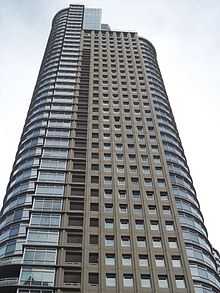Azucena Villaflor

Azucena Villaflor (7 April 1924 in Avellaneda – 10 December 1977) was an Argentine social activist, and one of the founders of the human rights association called Mothers of the Plaza de Mayo, which looked for desaparecidos (victims of forced disappearance during Argentina's Dirty War).
Life and family
Villaflor was the daughter of a lower class family, and her mother, Emma Nitz, was only 15 years old when Azucena was born; her father, Florentino Villaflor, was 21 and worked in a wool factory. Villaflor's paternal family had a history of militant involvement in Peronism.
Azucena started working at age 16 as a telephone secretary in a home appliances company. There she met Pedro De Vincenti, a labor union delegate. She married De Vicenti in 1949, and they had four children.
Mothers of the Plaza de Mayo
On 30 November 1976, eight months after the beginning of the military dictatorship that had named itself "National Reorganization Process", one of Villaflor's sons, Néstor, was abducted together with his wife Raquel Mangin. Villaflor started searching for them through the Ministry of Interior and sought support from the military vicar Adolfo Tortolo (though they could only speak with his secretary, Emilio Grasselli). During this search, she met other women also looking for missing relatives.
After six months of fruitless inquiry, Villaflor decided to start a series of demonstrations in order to take her case public. On 30 April 1977, she and thirteen other mothers, including María Adela Gard de Antokoletz, went to Plaza de Mayo in central Buenos Aires, in front of the Casa Rosada government palace, chosen by Villaflor because it was a politically significant spot in the history of Argentina. They decided to march around the Plaza, since the police had ordered them to "circulate", in the sense of not staying. The first march was on a Saturday, and not very visible; the second one took place on a Friday, and from then on, they settled on Thursdays, at about 3:30 p.m. (this schedule is still kept at present).
Disappearance and death
That same year, on 10 December, (International Human Rights Day), the Mothers published a newspaper advertisement with the names of their "disappeared" children. That night, Azucena Villaflor was taken by armed force from her home in Villa Dominico, Avellaneda, Buenos Aires. She is reported to have been detained in the concentration camp of the Navy Mechanics School (ESMA), which was run by Alfredo Astiz at that time.
The body of Villaflor, together with those of two other Mothers, was identified in July 2005 by the Argentine Forensic Anthropology Team (Equipo Argentino de Antropología Forense, EAAF, known also for having found and identified Che Guevara's corpse in Bolivia). The bodies showed fractures consistent with a fall and impact against a solid surface, which confirmed the hypothesis that the prisoners had been taken in one of the many "death flights" (vuelos de la muerte) recounted by former naval officer Adolfo Scilingo. In these flights, prisoners were drugged, stripped naked and flung out of aircraft flying over the ocean.
Villaflor's remains were cremated and her ashes were buried at the foot of the May Pyramid in the center of the Plaza de Mayo, on 8 December 2005, at the end of the 25th Annual Resistance March of the Mothers. Her surviving children chose the place; her daughter Cecilia said it was because "Here [at the Plaza] is where my mother was born to public life and here she must stay forever. She must stay for everyone".
A biography of Azucena Villaflor was written by historian Enrique Arrosagaray in 1997.
References
- Argentine Forensic Anthropology Team
- Asheville Global Report, Archives, No. 339, July 14–20, 2005. Remains of Mothers of Plaza de Mayo identified.
- Clarín, 4 December 2005. Otra víctima de los vuelos de la muerte (in Spanish)
- Página/12, 9 December 2005. Las cenizas de Azucena, junto a la Pirámide ; La fundadora de las Madres (in Spanish)
- The National Security Archive. US Declassified Documents: Argentine Junta Security Forces Killed, Disappeared Activists, Mothers and Nuns.
- Azucena Villaflor de Vicenti - Biographical comments and quotes by people who knew her (in Spanish)
- Arrosagaray, Enrique (1997). Biografía de Azucena Villaflor : creadora del Movimiento Madres de Plaza de Mayo (in Spanish). Buenos Aires: Catalogos. OCLC 37753161.
|